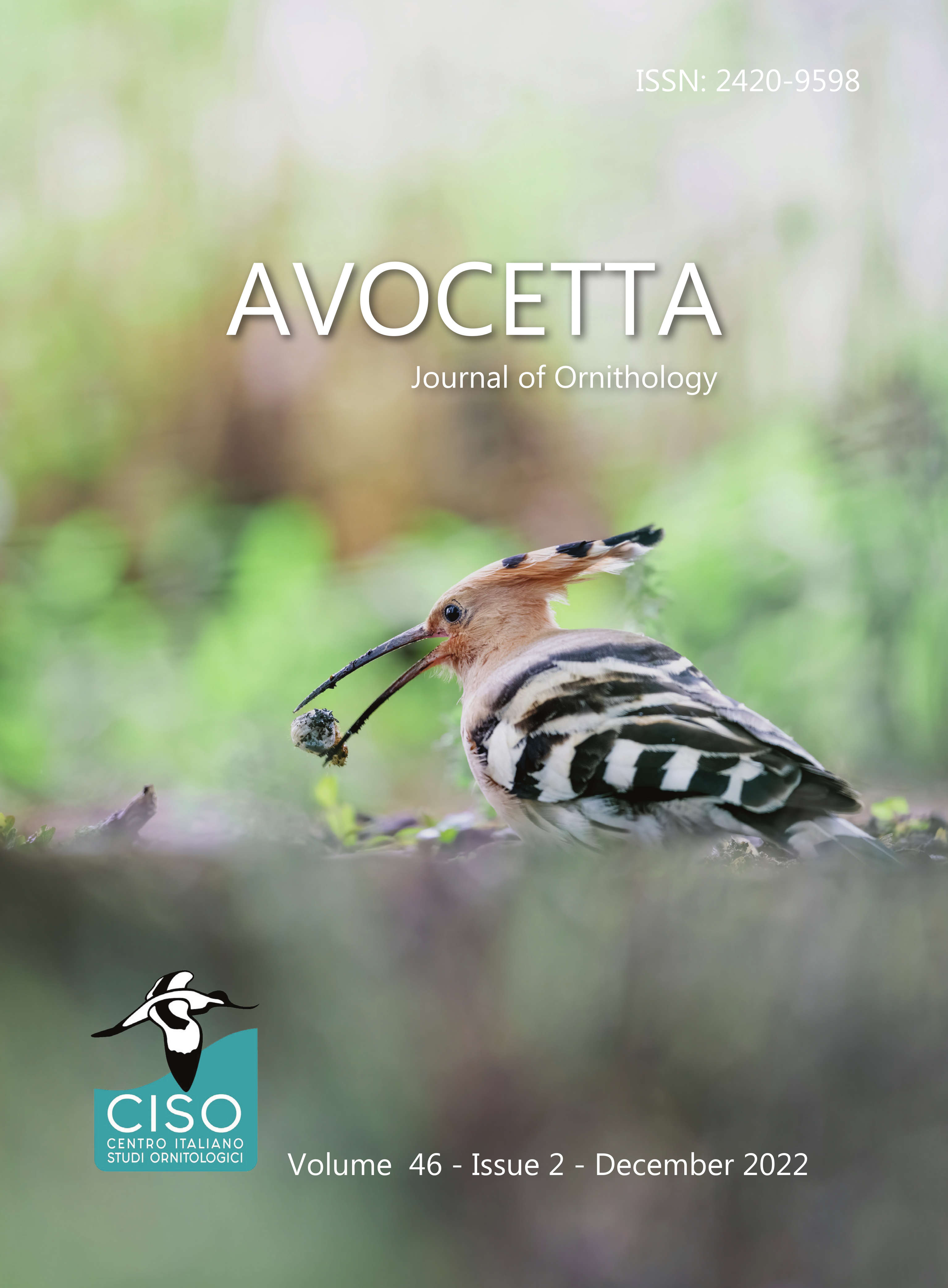
Volume 46 - N. 2
December 2022
Avocetta
Volume 46 - N. 2
Volume 46, Issue 2, December 2022
- Cover page - Issue 46.2 (full size) photo by Roman Bühler
-
Editorial - Italy at a turning point in its ecological research world (or not ?)
Michelangelo Morganti
-
Diet and foraging ecology of the Hoopoe Upupa epops in a Mediterranean area of Central Italy
Matteo Annessi, Alessio De Biase & Alessandro Montemaggiori
-
GPS-tracking reveals annual variation in home-range and sedentary behaviour in Common Kestrels breeding in central Italy
Gianluca Damiani, Valeria Jennings, Giacomo Dell'Omo & David Costantini
-
Habitat selection, density and breeding of Great Spotted Woodpecker Dendrocopos major in a protected natural area in northern Italy
Elena Piacentini & Gianpasquale Chiatante
-
Short Communication - Preliminary acoustic analyses of the structure of Red-billed Leiothrix Leiothrix lutea (Scopoli, 1786) song samples from Northern Italy
Luca Baghino & Sauro Giannerini
-
Columns - Italian Ornithological Commission (COI) - Report 30
Egidio Fulco & Cristiano Liuzzi (eds.)
-
Columns - Bird News, December 2022
Gaia Bazzi (ed.)
-
Columns - Book Review
Avocetta Editorial Board
-
Columns - Obituary
Marco Pantalone
- Full pdf of the entire 46.2 Avocetta issue (for home-printing purposes)

